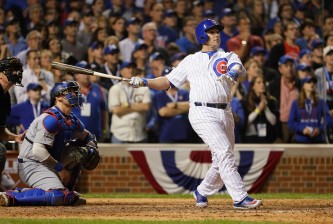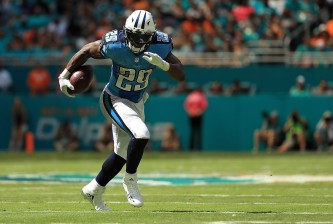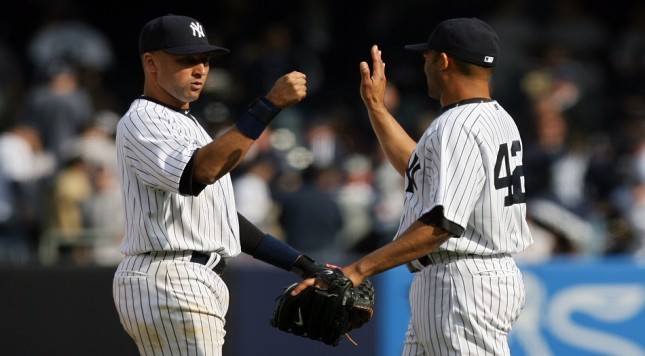No player gets to the Hall of Fame by chance. All that are fortunate enough to be elected have earned their way in (just as some have earned exclusion).
Ken Griffey Jr. and Mike Piazza, the two headliners of Sunday’s induction ceremony, each proved that there is no set path to Cooperstown. Griffey was the No. 1 overall draft pick by the Seattle Mariners in 1987, Piazza a 62nd round selection by the Los Angeles Dodgers one year later. Each had careers worthy of the highest individual honor in baseball.
We all saw this coming ten years ago. But what will the Hall look like a decade from now? Let’s begin with those either currently on (or about to join) the BBWAA ballot.
Ivan Rodriguez and Vladimir Guerrero, the two notables who become eligible in 2017, are getting in – whether it’s next year or sometime soon after.
The hang-up for Pudge lies prominently in the steroid allegations Jose Canseco made in 2005. Otherwise, Rodriguez would be a lock. For someone who’s arguably the greatest defensive catcher of all-time, it shouldn’t do much to hinder his case. For Guerrero, it’s whether or not the numbers merit inclusion. With 449 career homers, more than 2,500 hits and a .318 lifetime batting average, the answer is ‘yes.’
Piazza’s induction should open the door for another player who’s been unjustly omitted merely because of speculation. Jeff Bagwell, the 1994 NL MVP, has waited six years despite six straight seasons of more than 30 home runs and 100 RBIs and no concrete evidence of PED usage. After receiving 71.6 percent of the vote last year, there’s a good chance he’ll get more than the necessary 75 percent in ’17.
If you think Bagwell has waited a while, Tim Raines has waited an eternity. Luckily, enough writers will come to their senses and finally push the NL’s best leadoff hitter of the 1980s over the top in his final year of eligibility.
Curt Schilling (four times up for election) had no controversies with his on-field play, but he’s proven recently that his brain functions far worse than his right arm did. Nevertheless, he deserves recognition for what he did as a pitcher – especially during the postseason (11-2, 2.23 ERA).
Trevor Hoffman, on the other hand, was not stellar in his few playoff appearances. After being passed over in his first try on the ballot, any October failures should be overridden when you consider the 601 saves he posted over 18 years.
That number is second, of course, to Mariano Rivera, who becomes eligible in 2019. Unlike Hoffman, he won’t need to wait. Although there are still some who don’t give full respect to relief pitchers when it comes to Cooperstown, Rivera is overwhelmingly the best in his category (with Hoffman a strong No. 2).
Rivera was a Hall of Famer in every sense of the word, much like his longtime teammate Derek Jeter. The immortal Yankees shortstop and captain, will certainly join Rivera one year later.
Rewind back to 2018, and that’ll be the time when you’ll see a pair of first-ballot Hall of Famers making their respective acceptance speeches: Chipper Jones and Jim Thome. Jones totaled over 2,700 hits, 468 home runs and batted .303 — all with the Atlanta Braves. Thome’s 612 homers (seventh on the all-time list) came with six different clubs.
David Ortiz leads off the list of active players finishing off their careers without the need to build their Hall cases any further. Despite connections to PEDs and being primarily a designated hitter, Big Papi’s October heroics and overwhelming regular season numbers are too much to pass up at this point.
As Ortiz is making his farewell tour in 2016, Ichiro Suzuki has been making history. The 42-year-old is closing in on 3,000 MLB hits and already tallied 4,272 in the U.S. and Japan combined. Ichiro’s retirement plan isn’t known, but it’s a good bet that even this ageless hitting wonder can’t stick around for too much longer.
It’s hard to guarantee any other current players will retire and reach the Hall of Fame within the next ten years. Carlos Beltran (age 39) has statistics that are making his resume strong enough, but will 75 percent of the voters agree right away? Adrian Beltre, Albert Pujols, and Miguel Cabrera are bound for Cooperstown as well. However, barring devastating injuries, each can still play for (at least) the next three years (Cabrera is just 33).
From the simple choices, we turn to the much more complicated ones.
Barry Bonds and Roger Clemens are tied at the hip when it comes to this voting process. Since becoming eligible together in 2013, their percentages have increased slightly. Even with the recent changes in the voting base, which has eliminated some of the old-school writers, there are strong doubts either makes it within next six years. Looking even futher down the road, how will the Veterans Committee (comprised mostly of current Hall of Famers from a previous, and cleaner, era of baseball) feel about them?
As for Alex Rodriguez, even if he calls it quits in time to be eligible by 2023, it’s impossible to imagine the voters electing him quickly — or even at all. A-Rod is set to join Bonds on the short list of major leaguers with at least 700 career home runs.
But his legacy has already placed him on another list with Bonds (among others): one in which he’ll sure to be on the outside looking in at future Hall of Fame elections for years to come.























